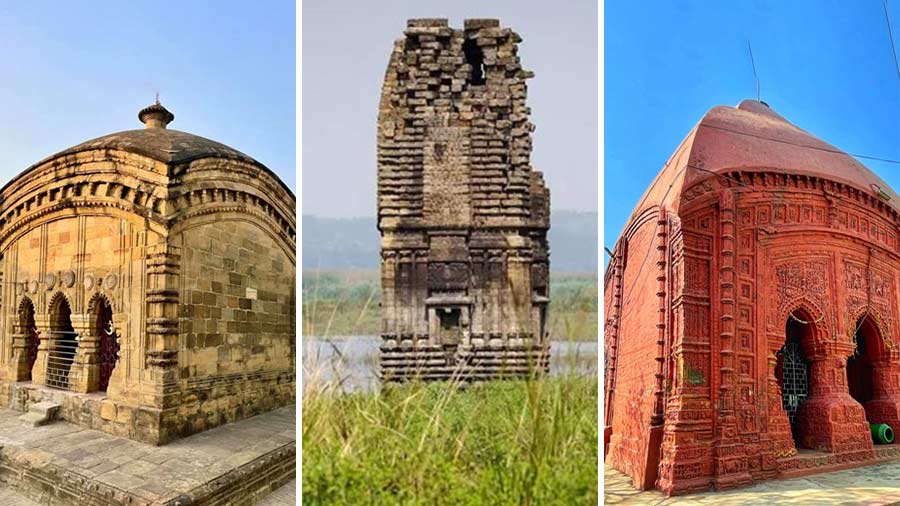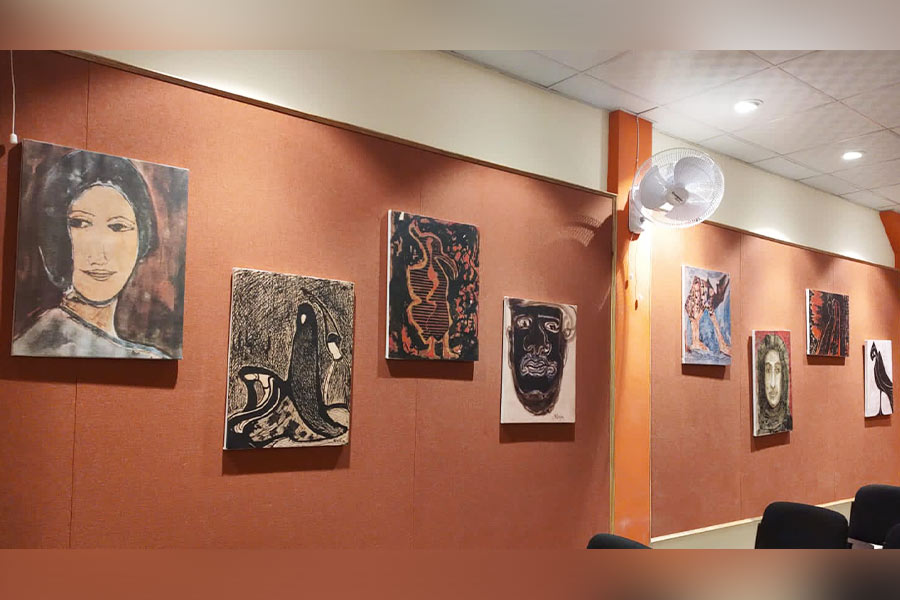The Chhotanagpur plateau is a culturally rich area just south of the Gangetic plains in Eastern India. A dry region with tropical and sub-tropical forests primarily consisting of sal and palash trees, the written history of the plateau goes back to the 5th century AD. The rugged terrain and dry weather are reflected in the art, culture and heritage of the region. Taking advantage of a sabbatical from work, I explored some of the hidden gems of the area – terracotta and stone temples from a bygone era.
I visited the beautifully crafted temples at Begunia, Garui, Garh Panchkot, Achkoda, Telkupi, Cheliama and Banda from my base at Asansol (220km from Kolkata and well connected by rail, road and air). My inspiration to visit these places were the works of archaeologist Joseph David Beglar, who worked for the Archaeological Survey of India. He was an Indo-Armenian engineer, archaeologist and photographer whose works are preserved at The British Library.
Barakar Begunia Temple Complex
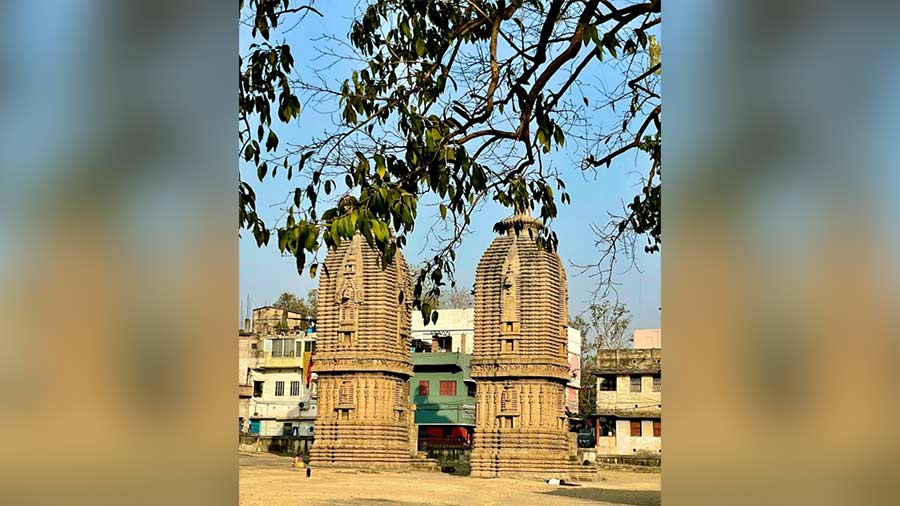
Two of the four stone temples in the rekha deul structure in Barakar
I was navigating narrow and crowded lanes full of shops that line the Barakar Station Road in Barabani, a village in the Asansol Sadar subdivision. With trepidation, I walked down a slope to a park where kids were playing cricket. And lo behold, there stood in front of me four marvellous stone temples, at least one of which is thought to be 800 years old. Joseph David Beglar had written in 1872, “Barakar, which is the terminus of the East Indian Railway, Barâkar Branch, and is situated on the Grand Trunk Road, contains several very interesting ancient remains, in excellent preservation. There are four temples, whose towers at least are in preservation; besides some ruins.” The temples are in the rekha deul structure. Local folklore has it that the temples resemble aubergine or begun and hence the area is called Begunia.
Garui
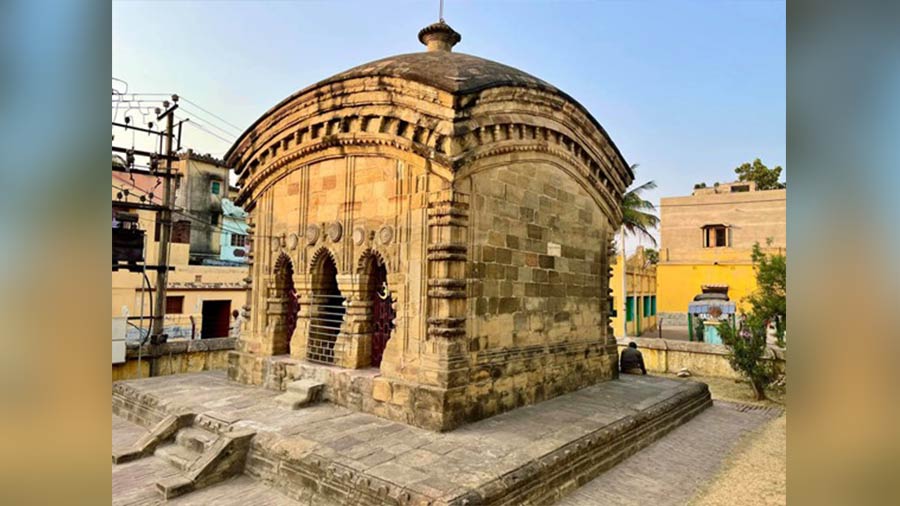
The 14th century stone temple in Garui
Just off NH19 (previously NH 2), while travelling west from Asansol, blink and you will miss the quaint hamlet of Garui. The village is home to a wonderful 35ft high stone temple in the Bengal hut style, the only one of its kind in the area. It is believed to have been built during the Pala Age. It houses an idol of Lord Narayana, which is said to be from the 14th century. The local villagers are chatty, and they told me that the idol is known as Damodar Shaligram Shila. The responsibility of daily worship and bhog is shared among the 80 Brahmin families living in the village on a rotational basis.
Garh Panchkot
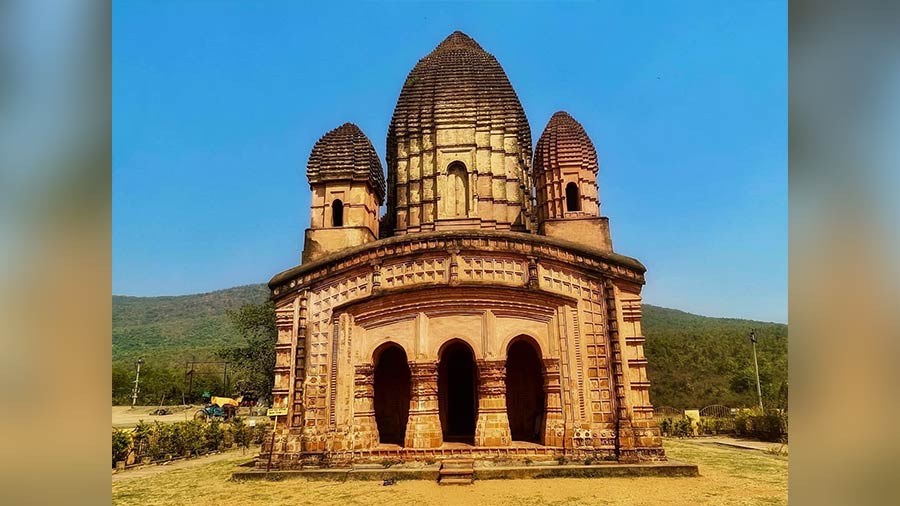
The restored Pancharatna temple at the foothills of the Panchkot hills
The Chhotanagpur plateau is characterised by undulating land with scattered hills. At the southern foot of one such hill, known as Panchkot, lies the ruins of Garh Panchkot. The ruins are a silent testimony to the Bargi attacks (conducted by the cavalry group belonging to the Marathas) in the 18th century. Among the scattered ruins lies one of the better examples of temple restoration – a beautiful Pancharatna temple, which was once in complete disrepair. The sanctum has a Radha-Krishna idol, which is worshipped daily. There is also a Jor Bangla temple in the ruins nearby.
Achkoda

Sourav Niyogi in front of the beautiful terracotta panels in Achkoda
A fine terracotta temple, said to be at least 500 years old, comes as a complete surprise in the sleepy village of Achkoda. The temples are in need of careful restoration, though the terracotta panels are in good shape. The charchala temple is dedicated to Raghunath. The temple complex was established by a local landlord. There are two other temples in the complex said to be mortuary temples of two Vaishnava sadhaks – Yadavananda Swami and Madhavananda Swami. One side of both these temples are adorned with beautiful terracotta work. Unfortunately, one of these temples collapsed earlier this year due to lack of conservation.
Telkupi
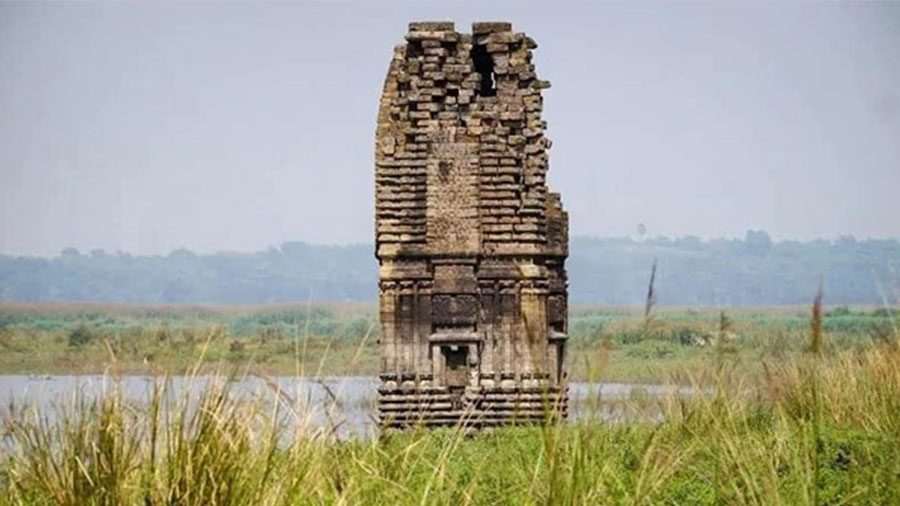
The submerged stone temple in Telkupi
A geographical characteristic of the Chhotanagpur plateau is the Damodar trough – the valley of river Damodar and its tributaries. The construction of the Panchet dam submerged a wonderful set of temples in the village of Telkupi. The sight of temples submerged in water makes for fascinating photography but a sad story of conservation. David Beglar wrote in 1872, “On the south bank of the Damuda river, is the village of Telkupi, containing, perhaps, the finest and largest number of temples within a small space that is to be found in the Chutia Nagpur Circle in Bengal”. I could only stand on the banks of the river and watch from afar one of the half-submerged temples, still standing strong given its stone construction in the rekha deul structure.
Cheliama
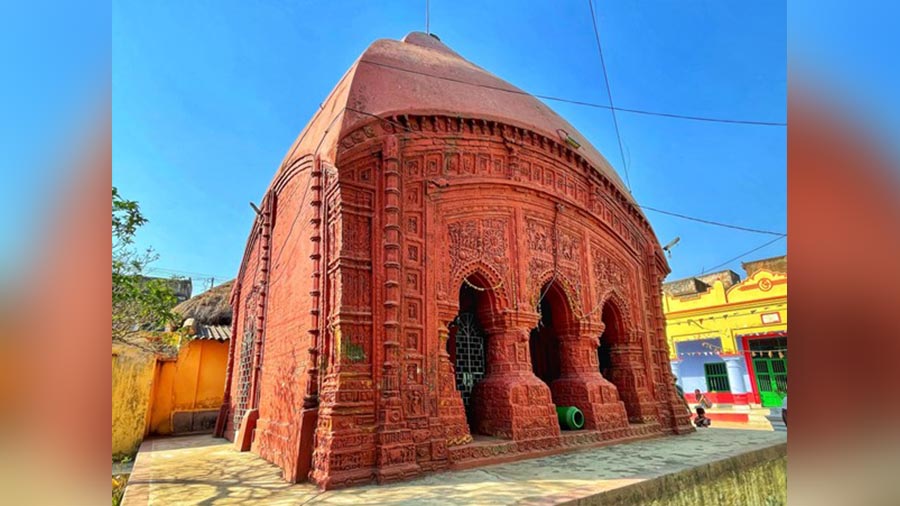
The Radha Binod temple at Cheliama
Driving across the dry rugged landscape, leaving behind a cloud of dust, I ended up in the village of Cheliama. After a quick snack of kachoris, I approached the Radha Binod temple. And my heart sank at the first sight. The richly decorated terracotta temple has been painted over in gaudy crimson. The beautiful panels of terracotta with stories from the Ramayana and of Durga from Hindu mythology still exist. However, with the paint peeling off, the finely detailed terracotta work is coming off.
Banda

The sparsely decorated yet majestic Banda deul
A short drive from Cheliama and I was in a forested area full of palash trees. And in the middle of a cleared section of the forest stood another stone temple of the rekha deul structure. The temple is believed to be of Jain heritage, from between the 11th and 13th centuries, when Jainism is said to have flourished in the Chhotanagpur plateau. David Beglar writes, “It resembles the temples of Barakar, and, like them, it consists of a single cell; like them, too, it once had a mandapa, in front of which the fragments, misarranged into a long-pillared hall, still exist.”
My trip started at Barakar and finished at Banda – both sites of the wonderful rekha deul styled stone temples. As I sipped tea, I turned towards the setting sun in full crimson glow, just ready to set over the jungle horizon. It is amazing how quickly it disappeared into the horizon. The engine of the Toyota revved up and I turned around to have a final long glimpse of the Banda deul silhouette in the midst of the setting sun and the dust from dry roads.
Sourav Niyogi is a management consultant by profession and a traveller by heart; he now lives in London.


